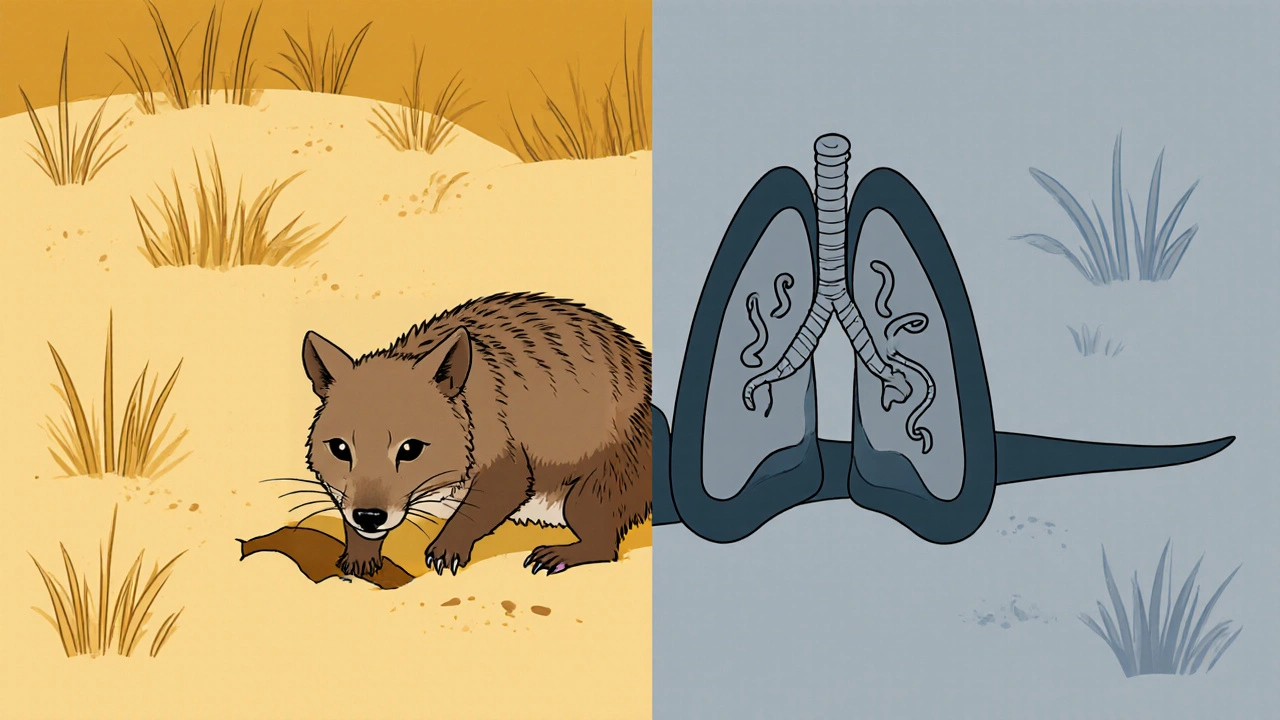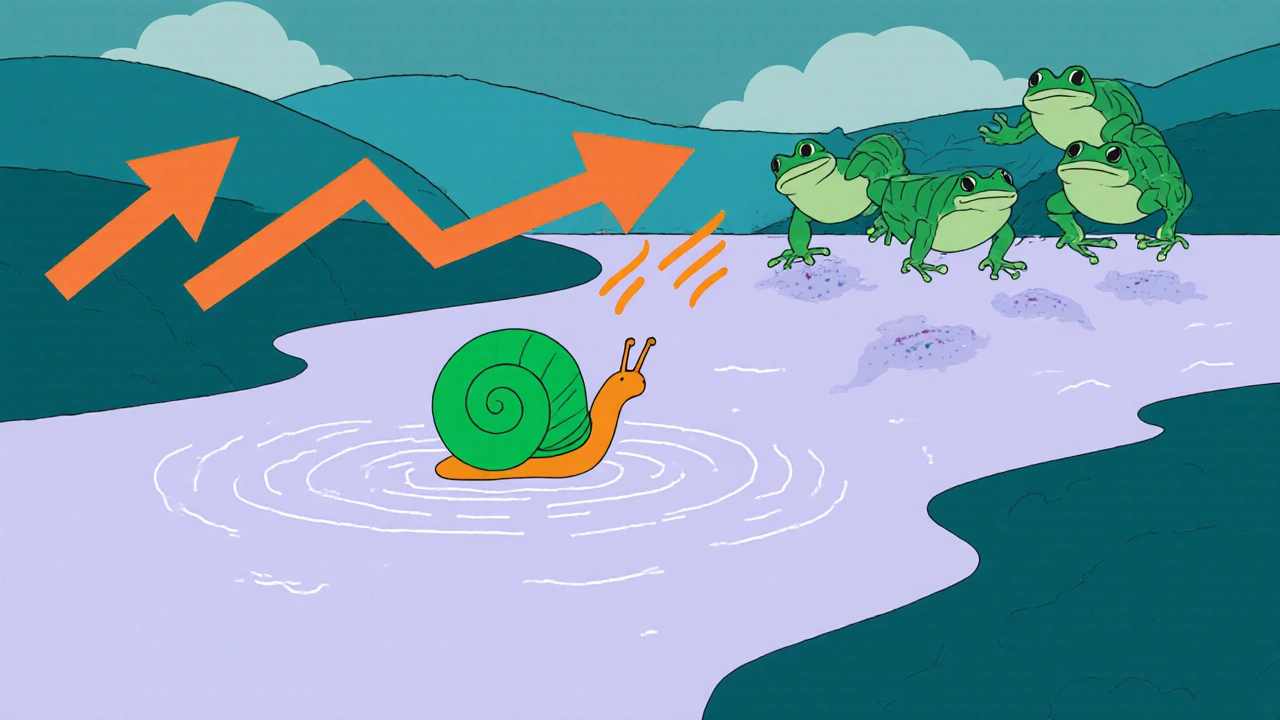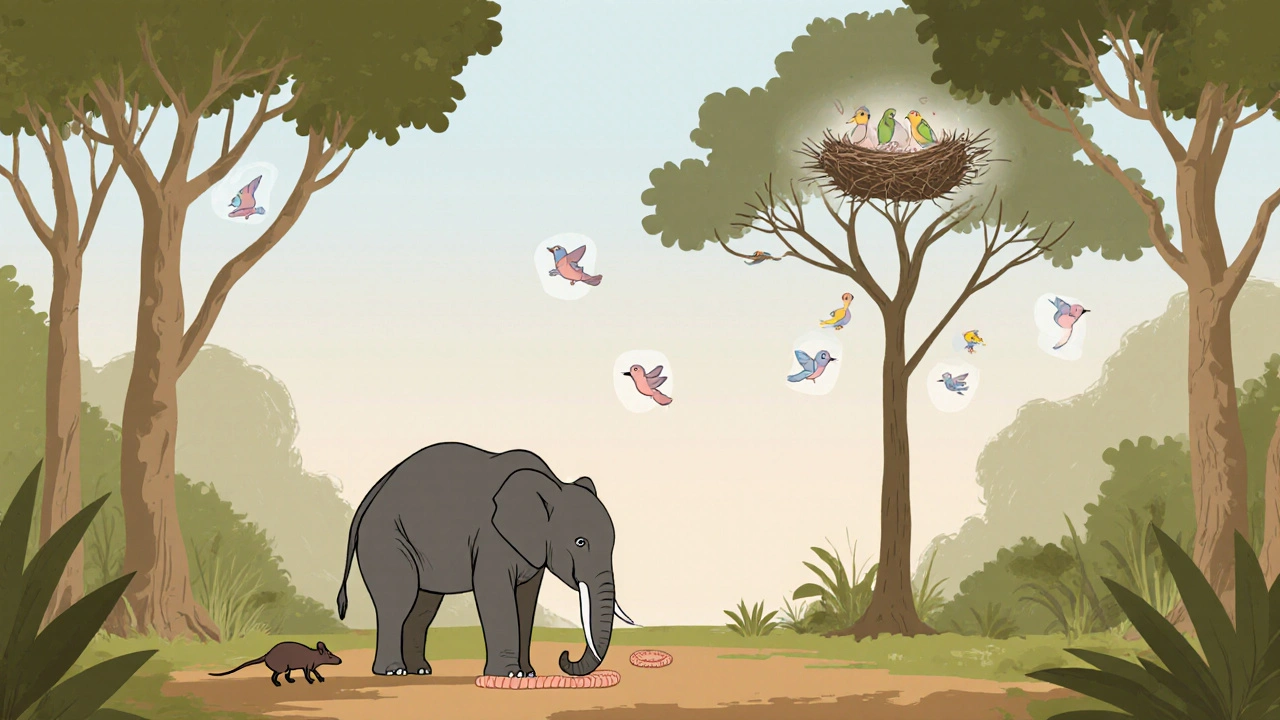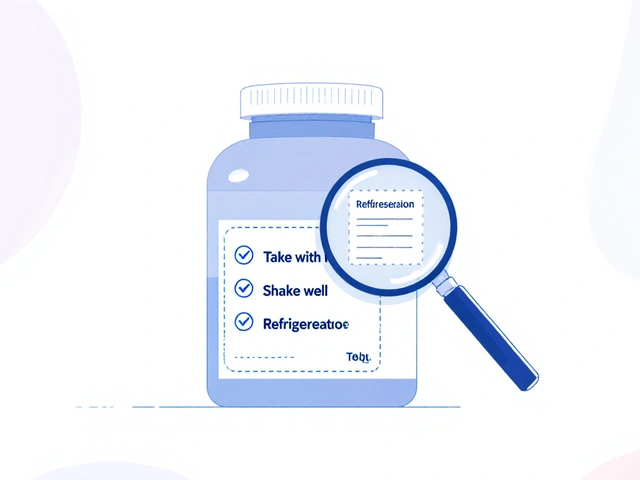Ecosystem Impact Calculator
How Parasitic Worms Affect Ecosystems
Calculate potential impacts on biodiversity, soil health, and ecosystem services based on parasite prevalence in wildlife populations.
Based on research showing:
10-15% birth weight reduction in elk with nematodes
22% increase in nematode prevalence with climate change
Seed dispersal loss affects 30% of plant species
When studying ecosystem health, parasitic worm infections are diseases caused by helminths that affect animals, plants, and humans, altering food webs and nutrient cycles. These tiny parasites may look harmless, but their ripple effects can reshape forests, grasslands, and even our farms. Below we break down what these infections are, why they matter for wildlife, and how they change the environment around us.
What exactly are parasitic worm infections?
Helminths are a broad group of parasitic worms that includes nematodes, cestodes, and trematodes. They live inside a host’s body, feeding on nutrients and often reproducing within the gut, lungs, or bloodstream. Common types include roundworms (nematodes), tapeworms (cestodes), and flukes (trematodes). Their life cycles can be simple-just a single host-or complex, involving intermediate hosts like snails, insects, or even water.
Humans get infected when they drink contaminated water or eat undercooked meat, but wildlife picks up these parasites from soil, water, or infected prey. The same species can jump between animals, creating a web of transmission that links mammals, birds, reptiles, and insects.
Why worm infections matter for wildlife
Wildlife free‑living animals that are not domesticated or kept by humans face several risks when parasites take hold. An individual animal may lose weight, develop anemia, or suffer organ damage. On a larger scale, a heavy parasite load can lower reproductive rates, increase mortality, and make populations more vulnerable to other stressors like drought or habitat loss.
Take the case of the eastern barred bandicoot in Australia. Researchers found that lungworm infections reduced the animals’ ability to dig burrows, directly shrinking their survival odds. In ungulate herds such as elk, gastrointestinal nematodes cause a 10‑15% drop in calf birth weights, which can shift herd dynamics over years.
How worm infections reshape ecosystems
Beyond individual animals, Ecosystem services benefits that natural systems provide to humans, like clean water, pollination, and nutrient cycling can be altered. Parasite‑laden herbivores often eat less, leading to reduced grazing pressure. This change can allow certain plant species to dominate, decreasing biodiversity the variety of life at genetic, species, and ecosystem levels and simplifying habitats.
In soil, the eggs and larvae of many helminths end up as soil contamination the presence of parasite stages in the ground, which can affect other organisms. While some researchers argue that certain worm populations can boost soil fertility by recycling nutrients, heavy burdens often lead to nutrient loss as infected animals excrete waste with altered composition.
Food webs also feel the strain. Predators that rely on infected prey may ingest parasites, which can affect the predator’s health or change its hunting behavior. For example, foxes eating rodents with high tapeworm loads have shown reduced hunting efficiency, indirectly affecting rodent populations and the plants they graze.

Real‑world examples
Below are a few vivid case studies that illustrate the breadth of impact.
- Roundworms in African elephants: Heavy burdens lead to intestinal blockage, causing deaths that remove key seed‑dispersers from savannas. The loss reduces tree regeneration and alters fire regimes.
- Tapeworms in salmon: Infected fish grow slower, making them less attractive to predators. This shifts the balance between salmon and other fish species, reshaping aquatic food chains.
- Flukes in freshwater turtles: Liver flukes impair growth, leading to younger turtles being preyed upon more often, which can lower turtle numbers and affect aquatic vegetation control.
- Intestinal nematodes in songbirds: Nestlings with high parasite loads have lower fledging success, which reduces insect control services provided by these birds.
Each example shows a chain reaction: a tiny worm hurts a host, that host’s role in the ecosystem weakens, and the whole system shifts.
Managing worm infections in the wild
Controlling parasites in free‑living populations is tricky, but a few strategies have shown promise.
- Monitoring and surveillance: Regular fecal surveys help map parasite hotspots. Using bioindicator an organism whose health reflects the condition of its environment species, like certain rodent communities, can flag emerging issues early.
- Targeted deworming: In high‑value conservation areas, wildlife managers sometimes distribute anthelmintic baits. This approach must be weighed against potential resistance and non‑target effects.
- Habitat manipulation: Reducing standing water can limit snail intermediate hosts for trematodes. Planting diverse forage can improve animal nutrition, making hosts less susceptible.
- Integrating livestock management: Keeping domestic animals away from wildlife corridors reduces zoonotic transmission the spread of disease between animals and humans of helminths that affect both groups.
These measures work best when combined with community education and policy support.

Future outlook: climate change and emerging parasites
Warmer temperatures and shifting rainfall patterns are expanding the range of many helminths. A study from 2023 showed that nematode prevalence in high‑altitude ungulates rose by 22% over a decade as glaciers receded. Warmer waters also speed up parasite development, meaning fish farms and wild fish populations face higher infection pressure.
Climate‑driven changes in host distribution create new contact points, opening doors for invasive species organisms introduced to new areas where they can dominate local ecosystems that carry novel parasites. In the Pacific Northwest, invasive snail species have introduced trematodes that previously weren’t present, endangering native amphibians.
Monitoring these trends is essential. Predictive models that combine climate data with parasite life‑cycle requirements can help managers anticipate hotspots before outbreaks occur.
| Impact Category | Direct Effect | Secondary Consequence |
|---|---|---|
| Host Health | Weight loss, anemia, organ damage | Reduced reproductive success, higher mortality |
| Population Dynamics | Lower birth rates, increased deaths | Altered species abundance, possible local extinctions |
| Food‑Web Structure | Infected prey less nutritious | Predator health decline, shifts in predation pressure |
| Soil & Nutrient Cycling | Eggs/larvae in soil, altered waste composition | Changes in plant growth, potential fertilization or depletion |
| Ecosystem Services | Reduced grazing, pollination, seed dispersal | Loss of vegetation diversity, increased erosion |
Quick Takeaways
- Parasitic worms affect individual animal health and can lower wildlife population resilience.
- Changes in host behavior and survival ripple through food webs, influencing plant communities and soil health.
- Monitoring, targeted deworming, and habitat management are core tools for conservationists.
- Climate change is likely to expand the range and intensity of helminth infections, demanding proactive surveillance.
Frequently Asked Questions
Can humans catch the same worm infections that affect wildlife?
Yes. Many helminths are zoonotic, meaning they can jump between animals and people. For example, the roundworm Trichinella spiralis is found in wild boar and can infect humans who eat undercooked meat.
Do all worm infections harm the environment?
Not always. Some low‑level helminth populations can enhance nutrient recycling, but heavy burdens usually tip the balance toward negative effects such as reduced biodiversity and altered soil chemistry.
How can I help reduce parasite spread while hiking?
Stick to established trails, avoid feeding wildlife, and wash your boots and gear after visiting wet areas. These steps limit the accidental transport of parasite eggs on shoes or clothing.
Are there any early‑warning signs of a worm outbreak in a wildlife population?
Sudden declines in body condition, increased mortality of juveniles, and abnormal stool patterns in captured animals often signal an emerging parasite problem. Regular fecal monitoring can catch these signs early.
What role do domestic animals play in spreading helminths to wildlife?
Livestock can act as reservoirs for many worms. When they graze near wild habitats, they shed eggs into the environment, increasing infection risk for nearby wildlife. Managing grazing zones helps break this cycle.




Liberty Moneybomb
October 18, 2025 AT 14:27Ever wonder why worm infections seem to spike right after those mysterious policy shifts? The elite biotech lobby has been quietly funding research that injects engineered helminths into wildlife corridors, all under the guise of “ecosystem restoration.” These parasites act like tiny bio‑weapons, subtly weakening keystone species while the public remains blissfully unaware. It's not just random disease – it's a calculated move to destabilize ecosystems that challenge corporate interests. And guess what? The data in the recent study is being suppressed, because admitting a link would expose a massive conflict of interest. The whole scenario feels like a plot straight out of a dystopian thriller, only it's happening in our forests and savannas.
Alex Lineses
October 25, 2025 AT 13:07Great summary! Your points on helminthic impact align perfectly with current epizootiological surveillance frameworks. Implementing systematic fecal egg count (FEC) monitoring can quantify infection intensity across trophic levels, providing robust baseline data for risk modelling. Moreover, targeted anthelmintic bait distribution, when integrated with GIS‑based hotspot identification, maximizes therapeutic reach while minimizing non‑target exposure. Leveraging these tools not only curtails parasite burden but also preserves functional biodiversity, which is essential for resilient ecosystem services. Keep up the excellent work; the integration of jargon‑heavy methodology into practical conservation is exactly what the field needs.
Brian Van Horne
November 1, 2025 AT 11:47The helminth data underscores a clear, compelling trend: infection intensity directly correlates with reduced reproductive output in affected wildlife populations.
Karla Johnson
November 8, 2025 AT 10:27The cascading consequences of worm infections extend far beyond the immediate health of individual animals.
When a host suffers from chronic anemia or organ impairment, its foraging efficiency declines, leading to altered grazing patterns across the landscape.
This shift can give rise to opportunistic plant species that outcompete native flora, thereby reducing overall biodiversity.
Furthermore, compromised hosts often exhibit changes in social behavior, such as reduced mating displays or increased territorial avoidance, which directly affect population dynamics.
In predator–prey interactions, infected prey may become easier targets, subtly reshaping predation rates and influencing the energy flow within food webs.
Climate change compounds these effects by accelerating parasite development cycles, meaning more generations per season and heightened transmission pressure.
As temperatures rise, previously inhospitable regions become viable habitats for both parasites and their intermediate hosts, expanding the geographic scope of infection.
This expansion threatens isolated wildlife populations that lack genetic resistance, potentially leading to localized extinctions.
Moreover, the increased parasite load can impair the immune competence of hosts, making them more susceptible to secondary infections and co‑pathogens.
From a conservation standpoint, ignoring these multifaceted impacts risks undermining restoration efforts that rely on healthy keystone species.
Effective management therefore requires integrated approaches that combine regular fecal monitoring, targeted deworming, and habitat modifications to disrupt lifecycle stages.
Community engagement is also pivotal; educating local stakeholders about the risks of unmanaged livestock grazing near wildlife corridors can markedly reduce zoonotic spillover.
Policy frameworks should incentivize collaborative monitoring programs that share data across governmental and non‑governmental organizations.
In doing so, we create a feedback loop where early detection informs timely intervention, preserving ecosystem services such as pollination and nutrient cycling.
Ultimately, acknowledging and addressing the hidden influence of parasitic worms is essential for maintaining ecological resilience in a rapidly changing world.
Ignoring these dynamics would be a disservice to both wildlife and the human communities that depend on robust ecosystems.
Mike Hamilton
November 15, 2025 AT 09:07Its important to note that even low level helminths can act like natural fertilizers, returning nutrients back to the soil as they decompose.
Ayla Stewart
November 22, 2025 AT 07:47The observation that soil egg loads correlate with nearby livestock grazing patterns seems to support the idea of cross‑species parasite transmission.
Poornima Ganesan
November 29, 2025 AT 06:27First, the life cycle of most nematodes involves an environmental stage that is highly resistant to desiccation, which means they persist in dry soils longer than many assume. Second, the reproductive output of adult worms can reach into the millions of eggs per day, flooding the ecosystem with propagules. Third, intermediate hosts such as snails are often overlooked in management plans, yet they are critical for trematode development. Fourth, the impact on animal nutrition is not merely a matter of weight loss; it also includes micronutrient deficiencies that hamper immune function. Finally, integrating molecular diagnostics like PCR into routine surveillance dramatically improves detection sensitivity compared to traditional microscopy.
Drew Waggoner
December 6, 2025 AT 05:07I feel a deep frustration when I see wildlife managers ignore the simple fact that parasite burdens can cripple an entire herd's ability to survive harsh winters, leading to needless die‑offs that could have been prevented.